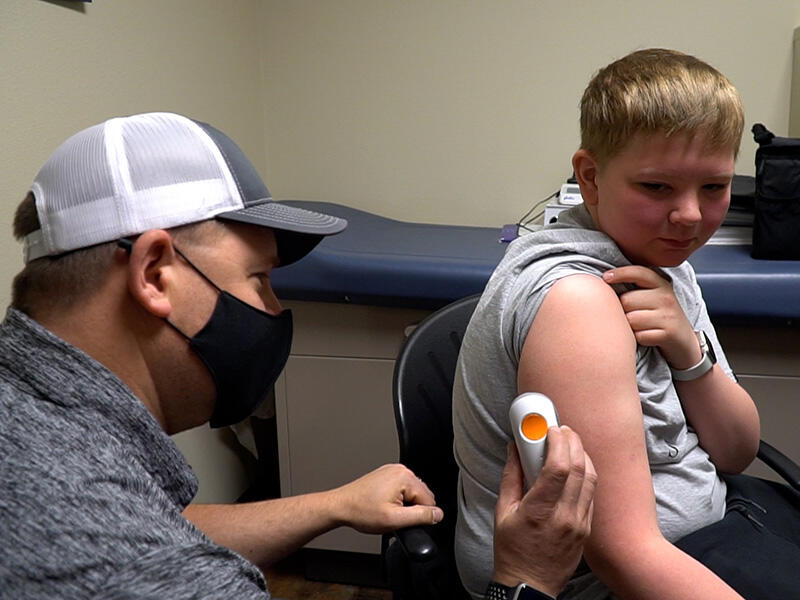When Lucas Paulson of Watford City, North Dakota, first got sick, his parents thought he’d get better in a few days.
“He had the flu, and he got better for a day, and then it seemed like he had the flu again and the same symptoms, you know. That’s what you do for a flu. You push fluids and you hit 7-UP and Coke and Gatorade and Powerade and try to get him to eat chicken noodle soup and whatever he can keep down. And he just wasn’t getting any better,” said Craig Paulson, Lucas’ father.
Until one day, Lucas couldn’t even stand on his own anymore.
“I remember waking up and trying to walk to the bathroom and needing to have help walking in a straight line because I couldn’t walk at all,” said Lucas. “I got to the bathroom and I threw up again.”
They rushed him to the emergency room, and after some tests, doctors realized what was wrong.
“They came back and said his blood sugar is 706 and the doctor looks at me and he goes, ‘That makes sense. That’s what’s going on. This is probably the onset of diabetes,’” said Katie Paulson, Lucas’ mother.
Normal blood sugar is less than 100 mg/dL.
“I think I blacked out for a minute and then I remember waking up and them saying, well, we were going to be flown to Bismarck,” said Lucas.
Life-threatening complications
Lucas was suffering from diabetic ketoacidosis, a life-threatening complication from diabetes. His pancreas was no longer producing insulin, but neither he nor his family knew it until he became seriously ill.
See Sanford’s diabetes research: PLEDGE Pediatric Screening Study
“He had been sick for quite a while, so his blood sugars were high,” said Kelly Fisher, a registered dietitian and certified diabetes educator at Sanford Bismarck. “He was very dehydrated. They thought they were dealing with flu, which a lot of families do. A lot of families don’t suspect diabetes right away.”
Juvenile diabetes is common
According to the Juvenile Diabetes Research Foundation, there are 1.6 million Americans living with type 1 diabetes, including approximately 200,000 people under the age of 20. Diabetes is a treatable disease, but there is no cure, so people like Fisher help new patients and their families learn how to live with their diagnosis.
“We’re teaching them how to test blood sugars, how to use the monitors, how to give the shots of insulin, how to handle insulin … just the day-to-day things of routine,” said Fisher.
“How does this fit into the routine of what he does? How is going back to school gonna look? What are his friends going to say? We always talk about that.”
Managing his disease
Along with the folks at Sanford Health, Lucas has someone else to guide him as well. His grandfather has type 1 diabetes and has managed it most of his life.
“The advances in the technology and the medicine behind diabetes now is a lot different than it was 45 years ago when my dad was diagnosed and years before that when my grandfather was diagnosed, and I’ve seen some of those changes with how my dad has been able to treat diabetes too,” said Katie Paulson.
While he learned he had type 1 diabetes in a terrifying way, Lucas is already adjusting to his new way of life. He says “getting poked with needles is pretty annoying” but that all in all managing his diabetes has been “pretty easy.”
With the help of people like Fisher at Sanford Health, and the care of his parents, Lucas is back to himself, and headed for a normal life, albeit one with type 1 diabetes.
Learn more
- What to do if your little one has type 1 diabetes
- Meet a family enrolled in type 1 diabetes study
- Podcast: Research screening works to end type 1 diabetes
…
Posted In Children's, Emergency Medicine, Endocrinology, Nutrition
